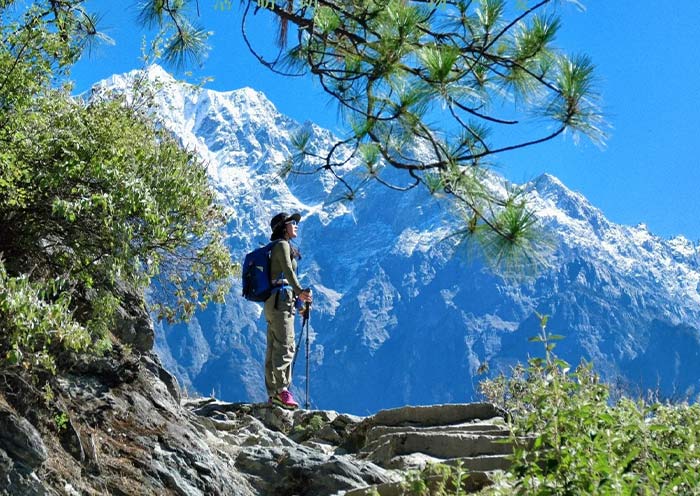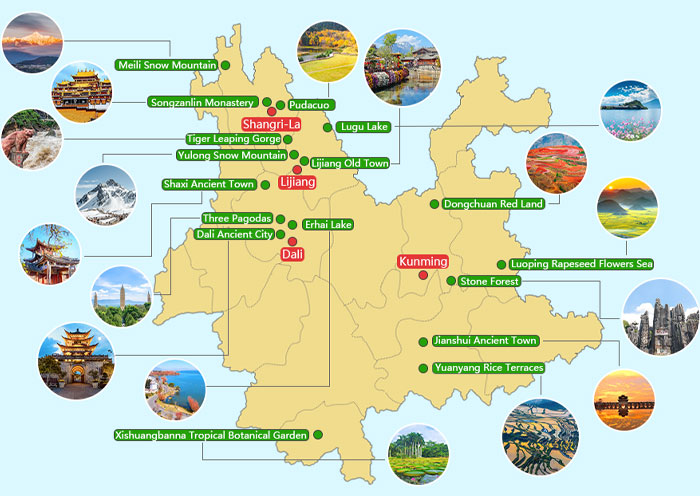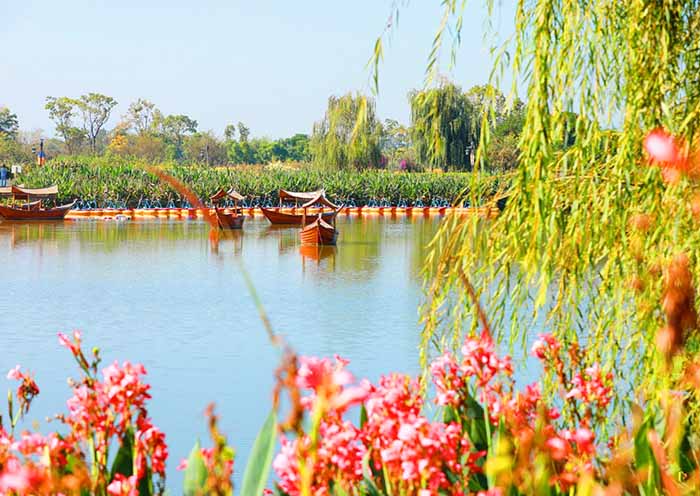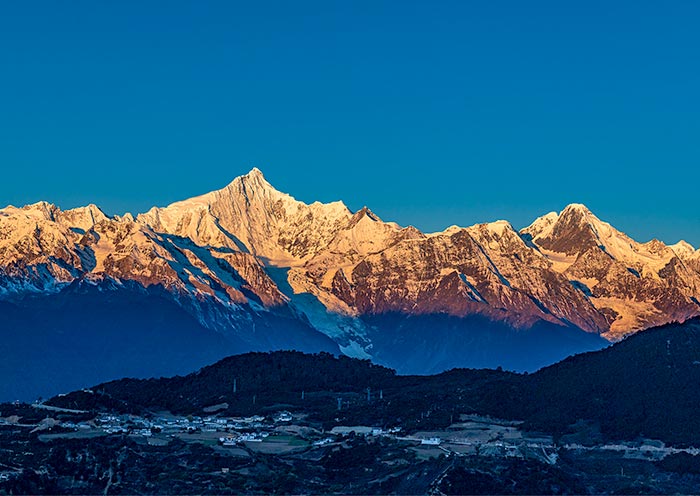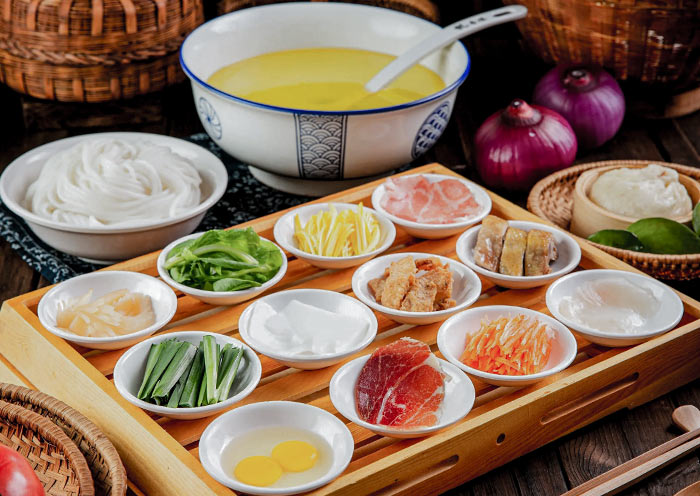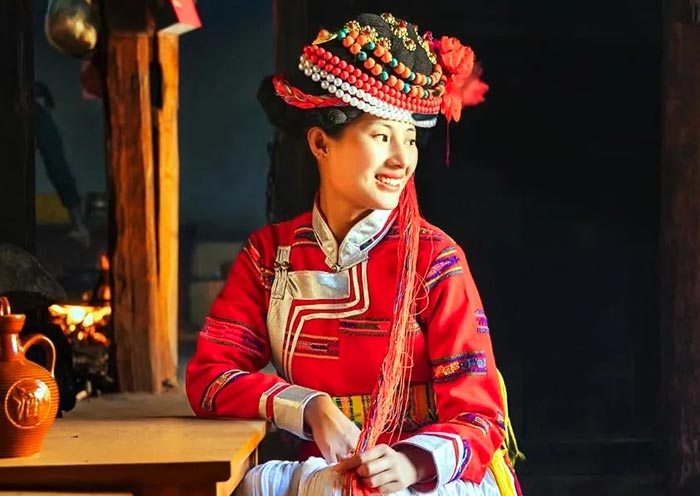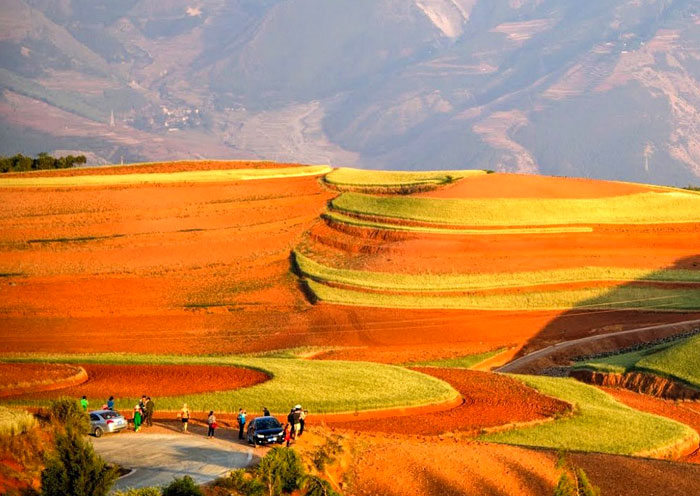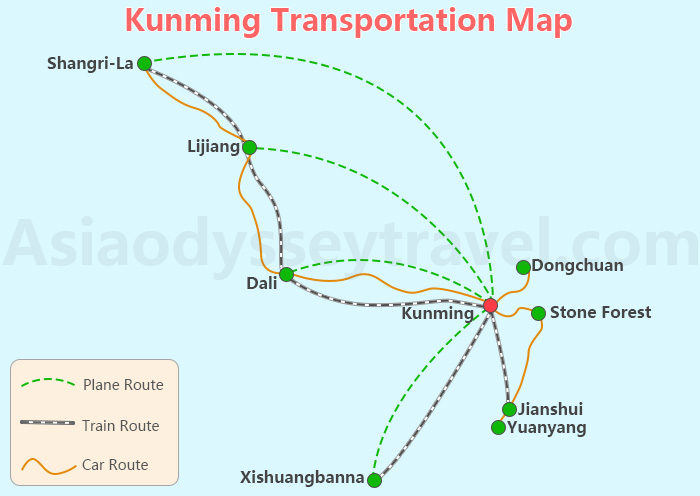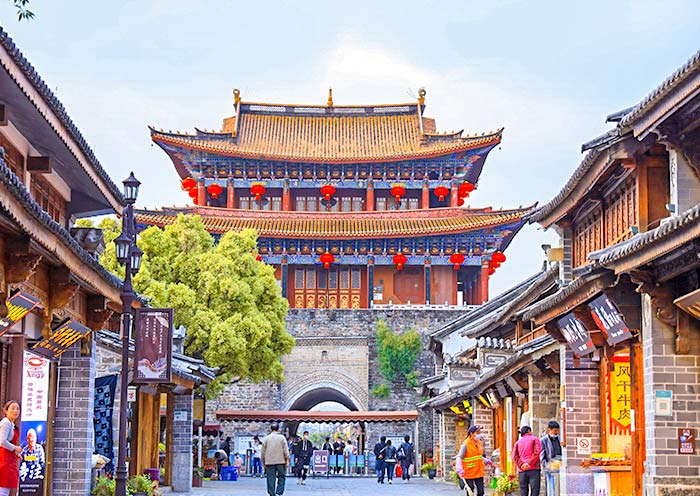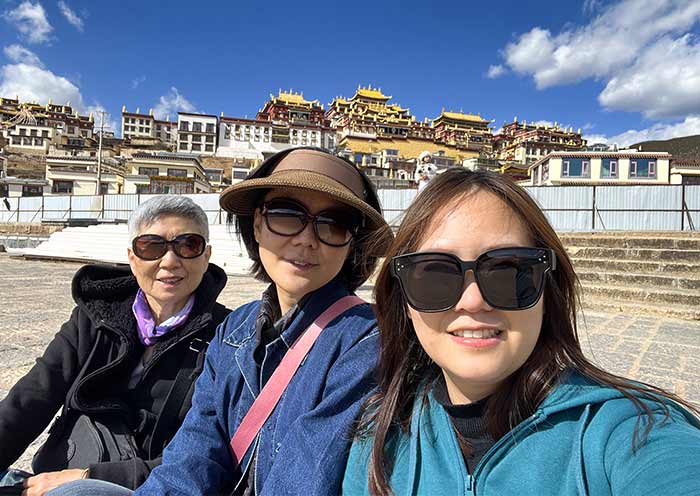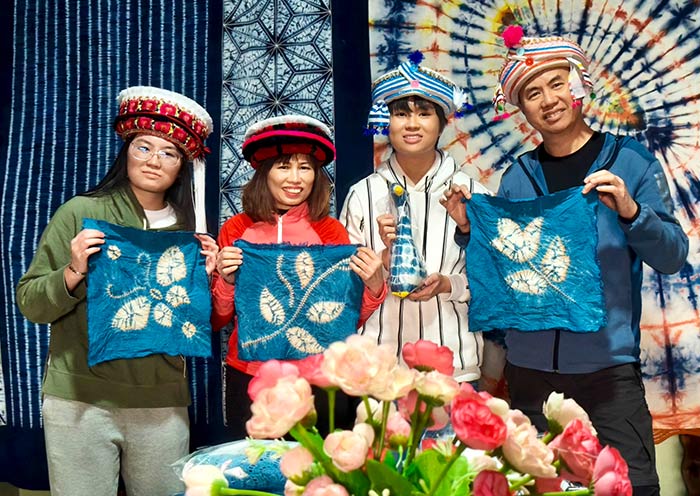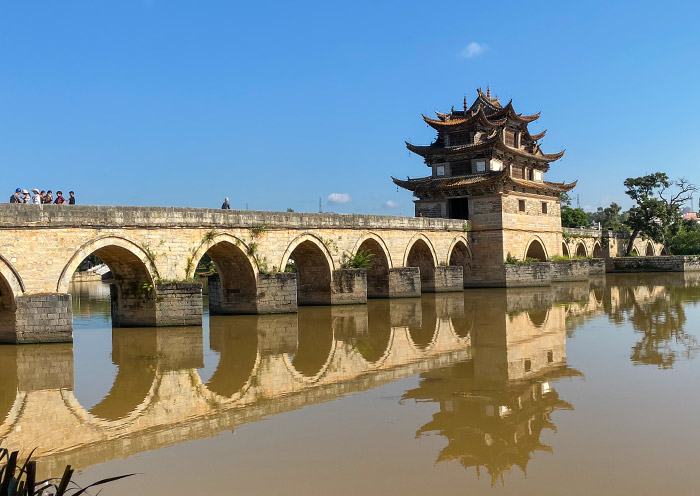Why Visit Yunnan Ethnic Groups
Vibrant Festivals
Almost every ethnic group in Yunnan has its festivals. From the Water-Splashing Festival of the Dai people, the Torch Festival of the Yi, the March Trade Fair of the Bai, to the Long Street Banquet of the Hani. If you want to experience a true cultural feast, you need to come to Yunnan and see the festivals and customs of its ethnic minorities.
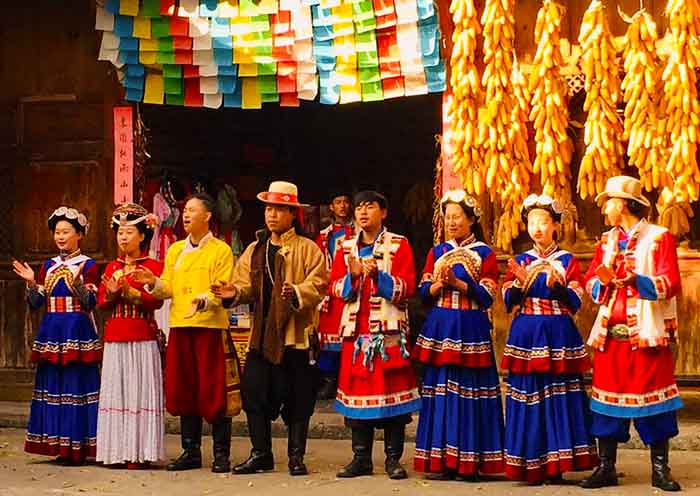
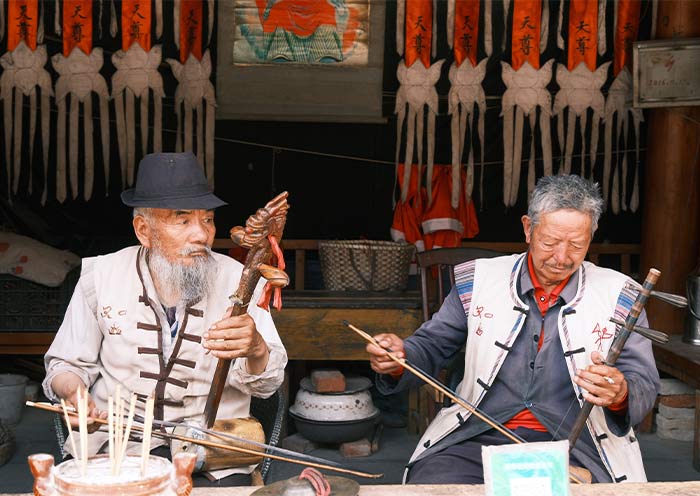
Songs and Dances Are Essential to Life
Songs and dances are a crucial part of life for Yunnan's minorities. Each group has its unique music and dance. For example, the Miao have "Youfang," the Yao have "Chang Fengliu," and the Bouyei have "Langshao." Young men and women often find their partners through singing and dancing, with the melodies and movements filled with wisdom and emotions. Wherever you go, you'll feel the joy and vitality brought by their music and dances.
Fascinating Marriage Customs
Yunnan's ethnic groups also have distinctive marriage customs. The "walking marriage" of the Mosuo is especially interesting. They don't have fixed marital relationships but base their unions on emotional connections, maintaining the traditions of a matriarchal society. Weddings of the Blang and Lahu might include tea ceremonies, highlighting the importance of tea culture in their lives. These unique customs are both intriguing and touching.
Colorful and Diverse Ethnic Costumes
The costumes of Yunnan's ethnic minorities are another highlight. The embroidery of the Yi and the tie-dye of the Bai are beautiful and rich in cultural significance. These gorgeous outfits can help you instantly recognize their ethnic origins.
Yunnan Ethnic Groups: List & Map
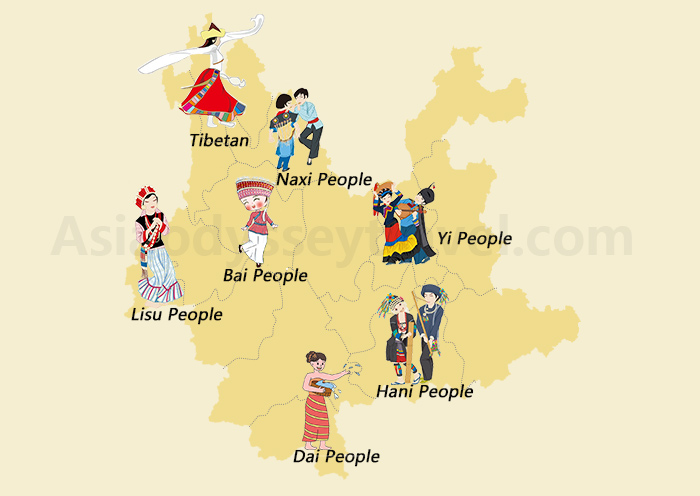
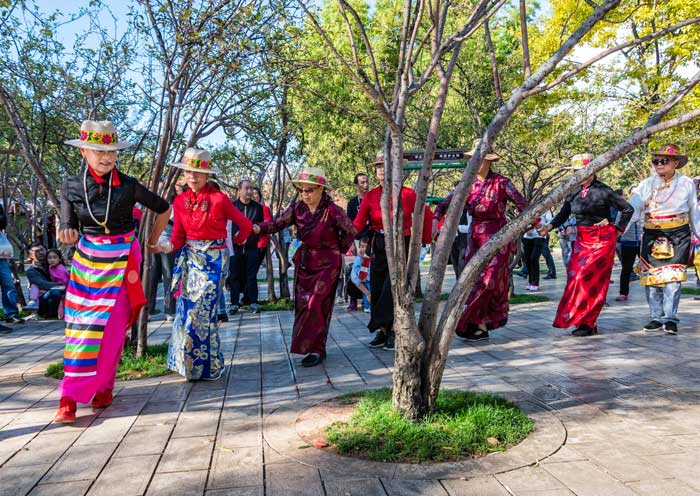
Yunnan Province is one of the most ethnically diverse regions in China, home to 25 indigenous ethnic minorities. Among these, 15 are unique to China, including the Hani, Bai, Dai, Lisu, Lahu, Wa, Naxi, Jingpo, Blang, Pumi, Achang, Nu, Jino, Deang, and Derung peoples. Each of these ethnic groups has its own distinct culture, adding a unique charm to Yunnan.
| Ethnic Group | Main Regions/City in Yunnan | Highlights |
|---|---|---|
| Naxi | Lijiang | Dongba Culture, Lijiang Old Town, Naxi Ancient Music |
| Bai | Dali | Three-Course Tea, Bai Dyeing Techniques |
| Hani | Honghe | Terraced Farming, Long Street Banquet, Mushroom Houses |
| Dai | Xishuangbanna | Water Splashing Festival, Dai Dance, Dai Brocade |
| Tibetan | Diqing (Shangri-La) | Shangri-La, Meili Snow Mountain, Tibetan New Year |
| Yi | Chuxiong, Honghe | Torch Festival, Yi Solar Calendar, Tiger Culture |
| Bulang | Xishuangbanna | Pu'er Tea Production, Bulang Ballad Singing, Bulang Costumes |
| Lisu | Nujiang | Knife Pole Festival, Bathing Festival, Traditional Folk Songs |
| Zhuang | Wenshan | March 3rd Singing Festival, Bronze Drum Dance, Zhuang Brocade |
| Buyi | Yunnan | Buyi Opera, Traditional Architecture |
| Miao | Yunnan | Miao Embroidery, Lusheng Festival, Stilted Houses |
| Wa | Lincang, Ximeng | Wooden Drum Dance, New Rice Festival, Wa Hair Swinging Dance |
| Yao | Yunnan | Panwang Festival, Yao Costumes, Yao Long Drum Dance |
| Jinpo | Dehong, Baoshan | Munao Zongge Festival, Jingpo Sword, Green Leaf Feast |
| Pumi | Nujiang, Lijiang | Pumi Mouth Harp, Wuxi Festival |
| Nu | Nujiang | Sichuan Pepper Oil, Fairy Festival |
| Achang | Dehong | Crossing Bridge Rice Noodles, Aluwoluo Festival, Husa Knife |
| Jinuo | Xishuangbanna | Drum Dance, Jino Tea, Jino Creation Myth |
| De'ang | Dehong, Baoshan | Sour Tea Production, Flower Water Festival, De'ang Costumes |
| Dulong | Nujiang | Dulong Blanket, Facial Tattoo Tradition, Dulongjiang Grand Canyon |
| Shui | Wenshan | Shui Books, Duan Festival, Horse Tail Embroidery |
| Manchu | Kunming | Manchu cuisine, Qipao |
| Hui | Kunming | Islamic culture, halal food |
| Lahu | Lancang, Simao | Traditional dances, agricultural practices |
| Mongolian | Kunming, Yuxi | Horse Culture, Naadam Festival |
Naxi Ethnic Group in Lijiang: Home to the World's Oldest Pictographic Writing
Settlements: Lijiang, Lugu Lake, Shangri-La, Deqin, Ninglang
Highlights: Lijiang Old Town, Baisha Frescoes, Dongba Culture
Festivals and Traditions: Sanduo Festival, Walking Marriage
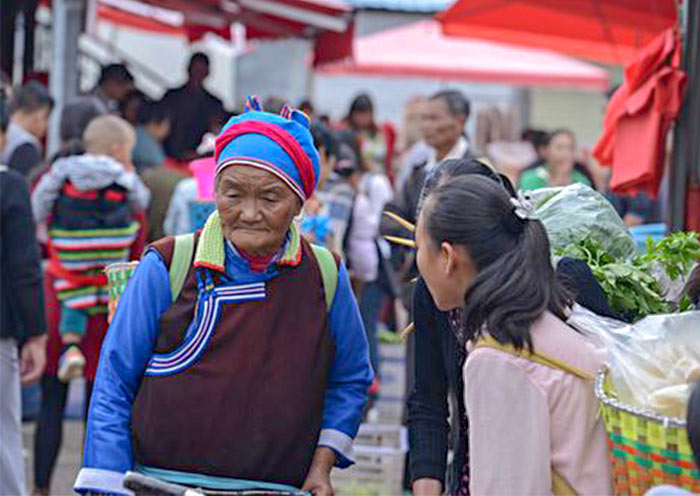
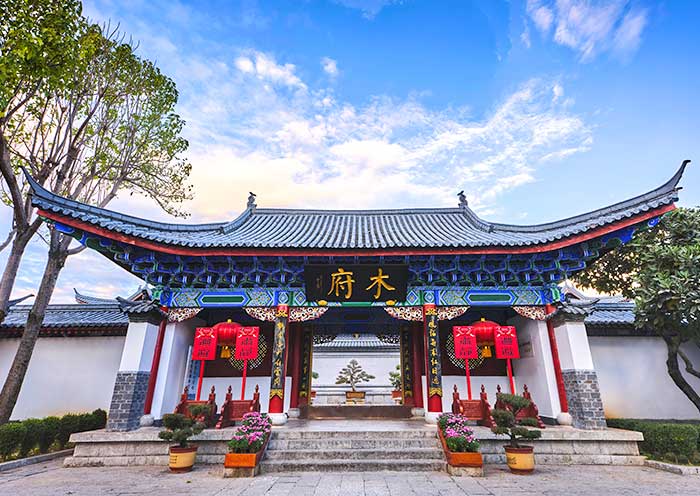
The Naxi people are one of the major ethnic minorities in Yunnan, primarily residing in Lijiang. They are renowned for their Dongba culture, murals, and Naxi music, and have preserved their unique traditions and customs for centuries.
Highlights of the Naxi Ethnic Group
Lijiang Old Town: A Naxi Icon
Lijiang Old Town, a UNESCO World Heritage site, has been the most important settlement for the Naxi people for centuries. At its heart lies the Mu Palace (木府), the historical residence of the Naxi chieftains, which served as the political, economic, and cultural center of Lijiang. The mansion is a testament to the rise and fall of the Naxi chieftain system and is a prime example of traditional Naxi architecture. Wandering through Lijiang Old Town, you can admire traditional Naxi buildings and homes, getting a feel for their urban planning concepts. The town's streets are also a great place to listen to Dongba music.
Dongba Culture Museum (Black Dragon Pool Park): Exploring Ancient Dongba Culture
One of the Naxi's most distinctive cultural heritages is the ancient Dongba pictographic script, one of the oldest writing systems still in use today. The Dongba Culture Museum, located in the scenic Black Dragon Pool Park, near Lijiang Old Town, is dedicated to preserving and showcasing the rich traditions of the Naxi people. The museum boasts a vast collection of Dongba scriptures, artifacts, and artworks, providing a comprehensive look into the Naxi's unique pictographic script and religious practices.
Baisha Frescoes: Another Highlight of Naxi Culture
Another gem of Naxi culture is its paintings and murals. The Baisha Frescoes, located in Baisha Village, are a series of ancient murals dating back to the Ming Dynasty. These frescoes depict religious themes and scenes from everyday life, blending influences from Tibetan Buddhism, Daoism, and local Naxi culture. They are a remarkable testament to the artistic heritage and spiritual beliefs of the Naxi people.
Shuhe Ancient Town: Stepping into Traditional Naxi Life
Shuhe is another well-preserved ancient town, often considered a quieter and more relaxed counterpart to Lijiang Old Town. Historically, Shuhe was an important stop on the ancient Tea Horse Road. Today, it offers a peaceful retreat where visitors can immerse themselves in the traditional life and culture of the Naxi people.
Festivals and Traditions of the Naxi People
Sanduo Festival
The Sanduo Festival, held annually on the eighth day of the second lunar month, is a major celebration for the Naxi people. It honors their protector deity, Sanduo, with various rituals, song and dance performances, and bustling market activities.
Walking Marriage
In the Lugu Lake area near Lijiang, the Mosuo people, a subgroup of the Naxi, practice "walking marriage." This matrilineal tradition involves men visiting women's homes at night and returning to their own homes during the day, reflecting the matriarchal structure of Mosuo society.
14 Best Things to Do in Lijiang: Lijiang Attractions (Updated 2025)
How to Plan a Trip to Lijiang Yunnan (2025)?
Kunming to Lijiang Train (High Speed): Best Way from Kunming to Lijiang
Bai Ethnic Group in Dali: Revere White and Excel in Handicrafts
Settlements: Dali
Highlights: Dali Ancient Town, Xizhou Ancient Town, Zhoucheng Village
Festivals and Traditions: March Fair Festival, Raosanling Festival
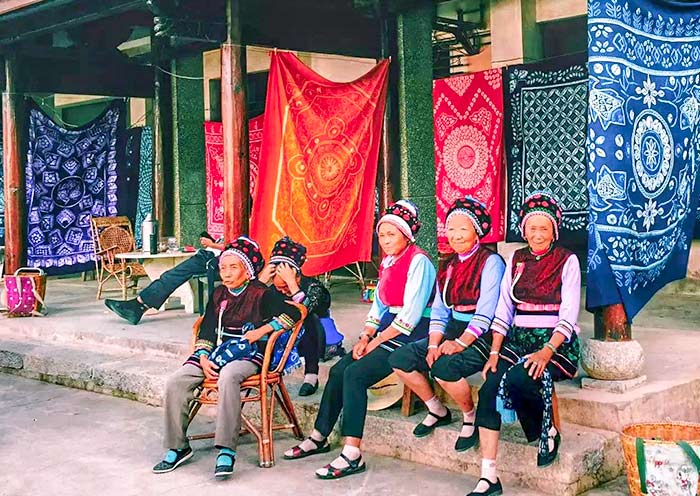
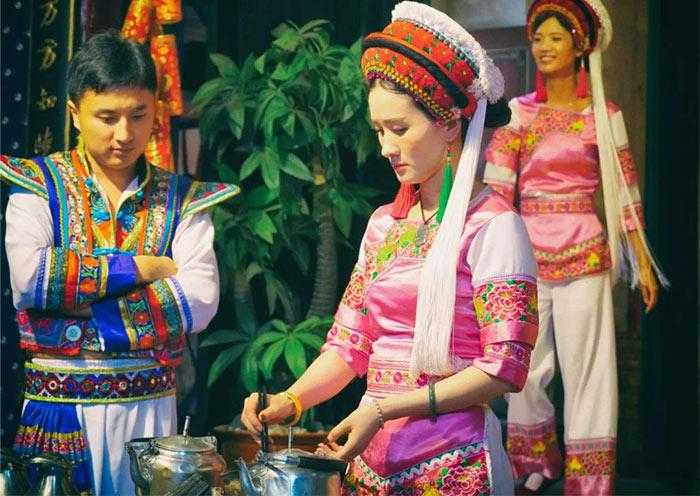
The Bai people are an integral part of the identity of Dali, with a rich culture and history that dates back over 2,000 years. Their love for the color white is evident in their white hats, clothes, shoes, and typical white residential architecture. Additionally, they are passionate about handicrafts, particularly tie-dyeing.
Top Attractions of the Bai Ethnic Group
Dali Ancient Town: A Historical Gem
Dali Ancient Town (大理古城) is a must-visit to explore Bai culture. As a former royal capital and a long-standing Bai settlement, it offers a wealth of traditional relics, cultural sites, and charming streets. The town is filled with shops selling local handicrafts and Bai cuisine. The bustling March Fair Festival, one of the most lively events, is also held near the ancient town.
Xizhou Ancient Town: Daily Life and Architecture
Xizhou Ancient Town (喜洲古城) is famed for its well-preserved 100+ Bai residential buildings, often referred to as a Bai residential museum. The Yan Family Compound is a symbol of Bai architecture and can be found in Xizhou's Sifang Street. Exploring the Xizhou morning market, strolling through the ancient town's streets, and savoring Bai San Dao Cha (Three Courses of Tea) immerse you in the daily life of the Bai people.
Zhoucheng Village: A Traditional Craft Hub
The Bai people are renowned for their handicrafts, with tie-dyeing being a star attraction of Dali. This craft involves complex patterns and vibrant colors, creating highly prized textiles. Visitors can tour workshops in Xizhou and Zhoucheng villages to watch artisans at work and even try making their own tie-dye pieces.
Festivals
March Fair Festival (三月街)
The March Fair Festival, held annually in the third lunar month near Dali Ancient Town, is one of the most important festivals for the Bai people. This 15-day event offers a variety of goods ranging from local produce to traditional crafts, along with performances of traditional music and dance.
Raosanling Festival (绕三灵节)
Raosanling Festival is another significant Bai celebration, marked by vibrant enthusiasm. It involves a pilgrimage to three temples around Erhai Lake, where Bai people perform rituals, sing traditional songs, and participate in communal feasts.
Best Time to Visit Dali: Dali Weather, Climate & Travel Tips
How to Plan a Trip to Dali, Yunnan (2025/2026)
Dali Attractions: Top 10 Things to Do & Places to Visit in Dali
Hani Ethnic Group and Yuyang Rice Terraces: Geniuses in Agricultural Engineering
Settlements: Yuanyang, Honghe, Jianshui
Highlights: Yuanyang Rice Terraces, Hani Villages
Festivals and Traditions: Sanduo Festival, Walking Marriage
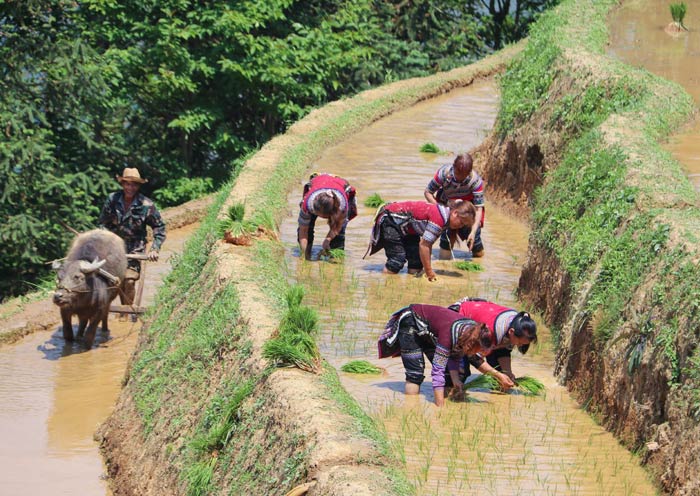

The Hani people are renowned as some of the world's most outstanding agricultural engineers. Their centuries-long effort in developing the Honghe Hani Rice Terraces has earned this site UNESCO World Heritage status, making it one of the three great rice terraces in the world. Among these, the Yuanyang Rice Terraces stand out as a symbol of Hani culture.
Top Attractions of Hani Ethnic Group
Yuanyang Rice Terraces
The Yuanyang Rice Terraces, carved into the Ailao Mountains over centuries, are an awe-inspiring engineering marvel. The terraces are especially breathtaking at sunrise and sunset when the light creates mesmerizing colors over the water-filled fields. Visitors can explore the terraces via various hiking trails and enjoy panoramic views from several scenic spots like Duoyishu, Laohuzui, Jingkou, and Bada. These areas are the best places to appreciate the Hani people's agricultural artistry.
Hani Villages
Traditional Hani villages, such as those in Yuanyang County, offer a deep dive into the daily life and customs of the Hani people. These villages feature unique mushroom-shaped houses made of wood and thatch, which are both practical and aesthetically pleasing. Walking through these villages, visitors can observe traditional Hani farming methods, experience the local hospitality, and participate in cultural activities. The villages provide an authentic glimpse into the Hani way of life, deeply connected to their agricultural practices and environment.
China Rice Terraces: Top 6 Rice Fields in China
How to Get from Kunming to Yuanyang Rice Terraces?
Tibetan in Shangri-La: Devout Buddhists
Shangri-La is a place of breathtaking natural beauty and rich Tibetan culture. It offers visitors a unique opportunity to experience the traditional lifestyle, spiritual practices, and stunning landscapes of the Tibetan people.
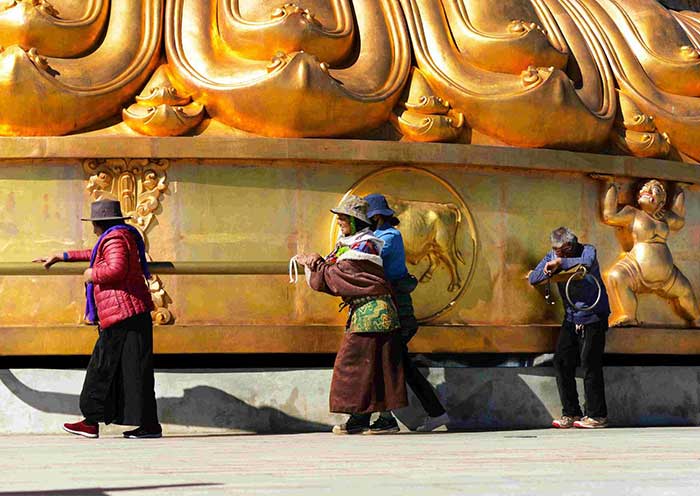
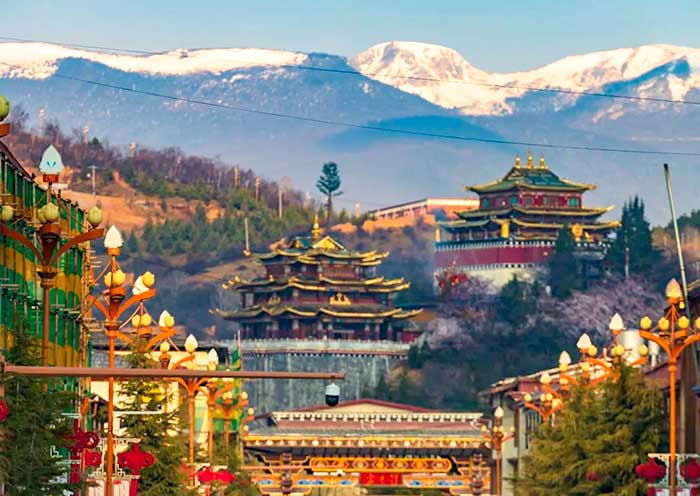
Highlights of Tibetan in Shangri-La
Songzanlin Monastery
Songzanlin Monastery, also known as the "Little Potala Palace," is the largest Tibetan Buddhist monastery in Yunnan. Founded in the 17th century, it is a stunning example of Tibetan architecture and houses numerous precious cultural relics and religious artifacts. Visitors can explore its intricate halls, witness daily rituals, and enjoy panoramic views of the surrounding landscape.
Dukezong Ancient Town
Dukezong Ancient Town is one of the best-preserved Tibetan towns in China, with a history spanning over 1,300 years. The town's narrow, winding streets are lined with traditional Tibetan houses, shops, and cafes. Visitors can explore the ancient town's many temples, including the iconic White Horse Temple, and climb to the top of Guishan Hill to spin the giant prayer wheel and enjoy panoramic views of the town and surrounding mountains.
Meili Snow Mountain
Meili Snow Mountain, also known as Kawagarbo, is one of the most sacred peaks in Tibetan Buddhism and one of the most majestic mountain ranges in the world. Rising to an elevation of 6,740 meters, it is the highest peak in Yunnan. Pilgrims and trekkers alike are drawn to its awe-inspiring beauty and spiritual significance.
Shangri-La Attractions: Things to Do & Places to Visit in Shangri-La
How to Plan a Trip to Shangri-La Yunnan? (10 Easy Steps)
Dai People in Xishuangbanna: A Water-Associated Ethnic Group
The Dai ethnic group is the largest minority in Yunnan, mainly residing in the southern region, with Xishuangbanna as its representative. The Dai people, known for their grand Water-Splashing Festival, traditional village architecture, and peacock dance, have attracted tourists worldwide to Xishuangbanna.
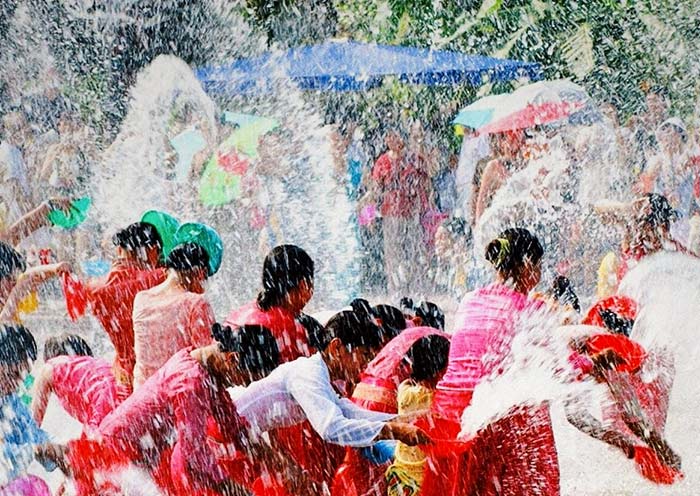
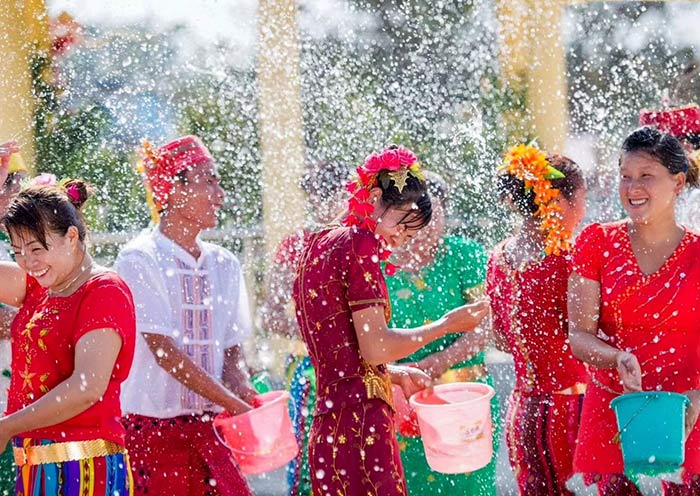
Top Attractions of Dai Ethnic Group
Manting Park
Manting Park, also known as Chunhuan Park, is the oldest park in Xishuangbanna and a significant cultural site for the Dai people. Historically used as a royal garden, it features traditional Dai architecture, serene gardens, and a tranquil lake. Visitors can enjoy cultural performances, including traditional Dai dances and music, and explore the park's scenic beauty and historical artifacts.
Dai Villages
Visiting Dai villages offers a glimpse into the daily lives and customs of the Dai people. Villages such as Ganlanba and Manzhang are known for their traditional stilt houses, vibrant markets, and friendly locals. These villages provide an opportunity to experience Dai hospitality, taste local cuisine, and learn about traditional crafts such as weaving and pottery.
Dai Ethnic Garden
The Dai Ethnic Garden is a cultural park that showcases the traditional lifestyle, architecture, and customs of the Dai people. The park is divided into several villages, each representing different aspects of Dai culture. Visitors can participate in cultural activities, watch traditional performances, and explore the beautiful gardens and pavilions. The park also hosts the Water-Splashing Festival, one of the most important festivals for the Dai people.
Festivals of Dai Ethnic Group in Xishuangbanna
Water-Splashing Festival (Songkran)
The Water-Splashing Festival, also known as Songkran, is the most famous and widely celebrated festival among the Dai people. It marks the Dai New Year and typically takes place in mid-April. The festival is known for its joyous and lively water-splashing activities, symbolizing purification and the washing away of bad luck. Participants splash water on each other, which is believed to bring good luck and blessings for the coming year.
Xishuangbanna Attractions: Top 8 Things to Do in Xishuangbanna
The Yi Ethnic Group and the Stone Forest in Kunming
The Yi ethnic group is one of the most important minority groups in Yunnan. They are characterized by their reverence for fire and the black tiger. Although they are scattered across various regions like Kunming, Honghe, Chuxiong, Dali, and Lijiang, the Stone Forest in Kunming is one of the best places to experience Yi culture.
Here, you can witness the astonishing natural rock formations, learn about the legend of Ashima, explore traditional Yi villages, and enjoy the grand Torch Festival.
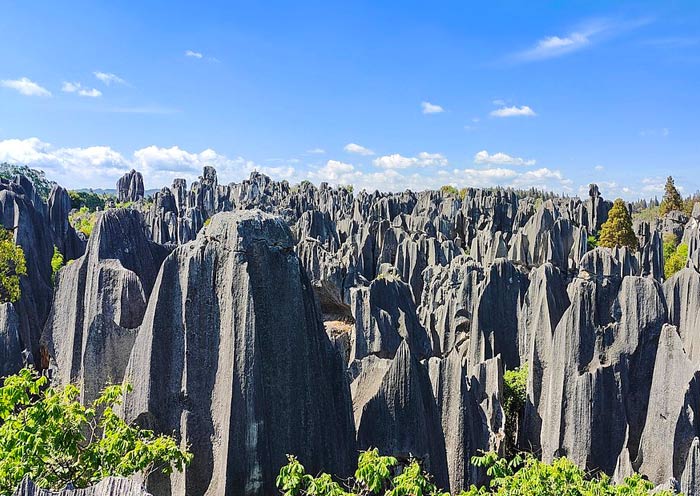
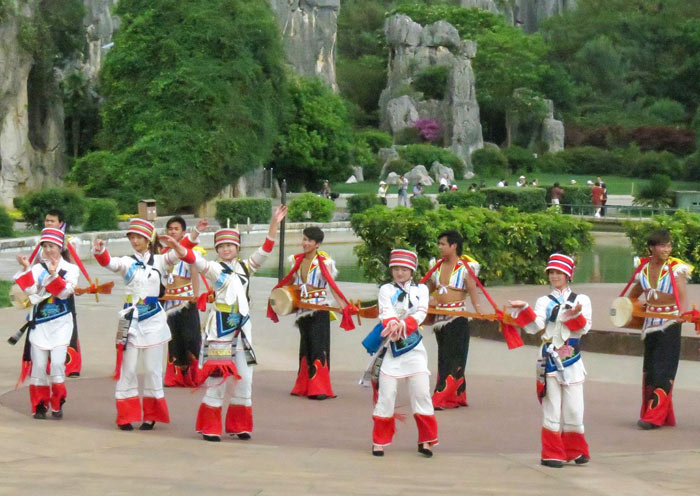
Major Attractions in the Stone Forest
Greater Stone Forest: The central area of the Stone Forest, where the tallest and most dramatic limestone pillars are located. Visitors can wander through narrow paths and open spaces, marveling at the sheer scale and beauty of the formations.
Lesser Stone Forest: A more compact area with intricate and densely packed rock formations. It offers a different perspective and an equally enchanting experience.
Naigu Stone Forest: Located a bit further from the main tourist areas, Naigu Stone Forest is less crowded and features darker, more weathered rock formations. It provides a quieter and more contemplative experience.
Zhiyun Cave: An underground cave system within the Stone Forest area, showcasing impressive stalactites, stalagmites, and other karst formations. It adds an element of underground exploration to the visit.
Ashima Legend
One of the most famous legends associated with the Stone Forest is the story of Ashima. According to the tale, Ashima was a beautiful Sani girl who turned into stone after being pursued by a wealthy suitor against her will. The story is a poignant symbol of love and resistance against oppression and is commemorated in local songs, dances, and performances.
Torch Festival
The annual Torch Festival is one of the most vibrant and important cultural events for the Yi people. Held in July or August, this festival involves lighting large torches to ward off evil spirits and bring good luck. It features traditional dances, music, and communal activities that highlight the rich cultural heritage of the Yi people.
The Lisu Ethnic Group and the Nujiang Grand Canyon
The Lisu people are known for their love of singing, dancing, and weaving. Music and dance play a central role in Lisu culture. Traditional instruments include bamboo flutes, drums, and the "qiben" (mouth harp). Lisu dances are lively and often performed during festivals and public gatherings.
The Lisu have lived near the Nujiang Grand Canyon for nearly a thousand years, coexisting harmoniously with nature. One of the most spectacular places to experience Lisu culture is the Nujiang Grand Canyon in Yunnan. It is one of the longest and deepest canyons in the world, stretching over 300 kilometers (186 miles). The canyon is renowned for its stunning landscapes, including towering cliffs, roaring rapids, and dense forests.
Exploring the Nujiang Grand Canyon, you'll come across Lisu villages built on steep slopes. These villages feature wooden houses with unique architectural styles. Visitors can learn about traditional crafts, agriculture, and daily life.
The Bulang Ethnic Group and Pu'er Tea
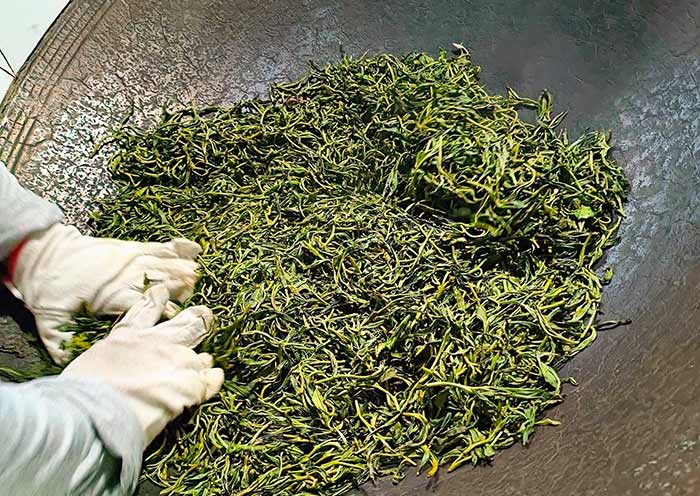
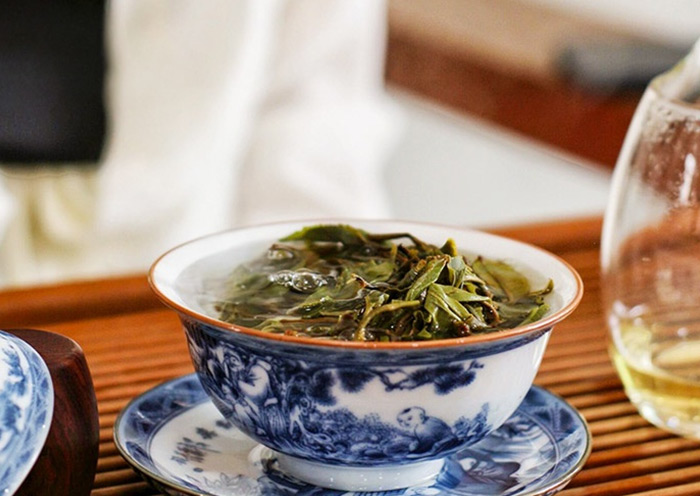
The Bulang ethnic group primarily lives in the Xishuangbanna region of Yunnan. Their clothing is distinctive, with both men and women favoring blue and black colors. The Bulang have unique customs such as tooth dyeing and tattooing. They believe that dyed black teeth symbolize health and beauty, and adult men often tattoo geometric shapes and animal patterns on their limbs and chests.
Tea has been a traditional crop for the Bulang people since ancient times, with Pu'er tea being the star among them. Bulang Mountain, where many Bulang people live, is one of the key production areas for Pu'er tea. The region boasts ideal conditions for growing tea trees, including misty weather, fertile soil, and a mild, humid climate. The Bulang have mastered traditional Pu'er tea-making techniques, including hand-picking, pan-firing, rolling, and sun-drying. These skills are passed down through generations, ensuring the distinctiveness and quality of Pu'er tea.
As the fame of Pu'er tea has spread, Bulang tea mountains have become popular tourist destinations. Visitors to Bulang villages can experience tea picking and processing firsthand, and gain a deeper understanding of Bulang tea culture.
Other Yunnan Minorities
The Derung people
The Derung people, also known as the Drung or Dulong, are one of China's smallest and most intriguing ethnic minorities, primarily residing in the remote Dulong Valley in Yunnan Province. Despite their small population, the Derung have a rich cultural heritage and unique traditions.
One of the most striking aspects of Derung culture is the practice of facial tattoos among women. Traditionally, young girls would receive these tattoos as a rite of passage into adulthood. Although the practice is now rare, it remains a significant cultural symbol, believed to protect against evil spirits.
The Wa People
Masters of Lush Tea Plantations: Nestled in the border regions with Myanmar and Laos, the Va people are known for their expertise in cultivating high-quality tea. Their unique methods, passed down through generations, produce distinctive teas with intense flavors and aromas.
The Jingpo People
Hunters with a Colorful Legacy: The Jingpo people, inhabiting the mountainous regions near Myanmar, are skilled hunters with a rich oral tradition. Their vibrant attire, adorned with intricate embroidery and shell ornaments, reflects their deep connection to nature and their ancestral heritage.
The Nuosu People
Heirs of the Pictograms: Similar to the Naxi, the Nuosu people possess their own unique pictographic writing system known as "Nuosu hieroglyphs." These symbols, etched on bamboo slips and wooden boards, offer insights into their mythology, social structure, and relationship with the cosmos.
The Pumi People
Masters of Polyphonic Singing: The Pumi people, residing primarily in the northwestern areas of Yunnan, are renowned for their captivating polyphonic singing tradition. This ancient practice, involving multiple vocal parts harmonizing simultaneously, creates a truly mesmerizing soundscape.
The Achang People
Artisans of Exquisite Silverware: The Achang people, concentrated in western Yunnan, are known for their mastery of silver crafting. Their intricate jewelry and ornaments, often featuring geometric patterns and animal motifs, showcase their artistic talent and cultural symbolism.
Travel with Asia Odyssey Travel (AOT) to Explore Yunnan
Embark on a breathtaking journey to Yunnan with Asia Odyssey Travel (AOT) and discover the province's stunning landscapes and rich cultural heritage. As a trusted travel partner with over a decade of experience in the region, AOT offers a wide range of customizable Yunnan tour packages tailored to meet the diverse interests of every traveler. Whether you're seeking a family adventure, a romantic escape, or an in-depth exploration of Yunnan's ethnic diversity and natural wonders, AOT has the expertise to craft the perfect itinerary for you.
Popular Destinations:
- Kunming: The "Spring City" known for its pleasant climate and vibrant flowers.
- Lijiang: A UNESCO World Heritage Site with a well-preserved ancient town.
- Dali: Famous for its beautiful Erhai Lake and the ancient Bai culture.
- Shangri-La: A gateway to Tibetan culture and stunning highland scenery.
- Yuanyang Rice Terraces: Renowned for its spectacular rice terraces.
- Xishuangbanna: Experience the tropical climate, rich biodiversity, and the unique Dai culture, including attractions like the Wild Elephant Valley and tropical rainforests.
- Tiger Leaping Gorge: One of the deepest gorges in the world, offering breathtaking views and thrilling hiking trails along the Jinsha River.
- Jianshui: A historic town known for its ancient architecture, including the well-preserved Jianshui Confucian Temple and the beautiful Zhu Family Garden.
Tour Packages:
- Comprehensive Yunnan Tours: Kunming Lijiang Tour, Kunming Dali Tour, Lijiang Shangri-La Tours
- Yunnan Theme Tours: Yunnan High Speed Train Tours, Adventure, Hiking, Nature, Family, Winter, Photography, Ancient Town, Ethnic Group
- Combined Tours with Nearby Regions: Yunnan and Tibet Tour
Start planning your dream vacation today with Asia Odyssey Travel and experience the beauty, culture, and warm hospitality of Yunnan. Contact us to begin your journey.
